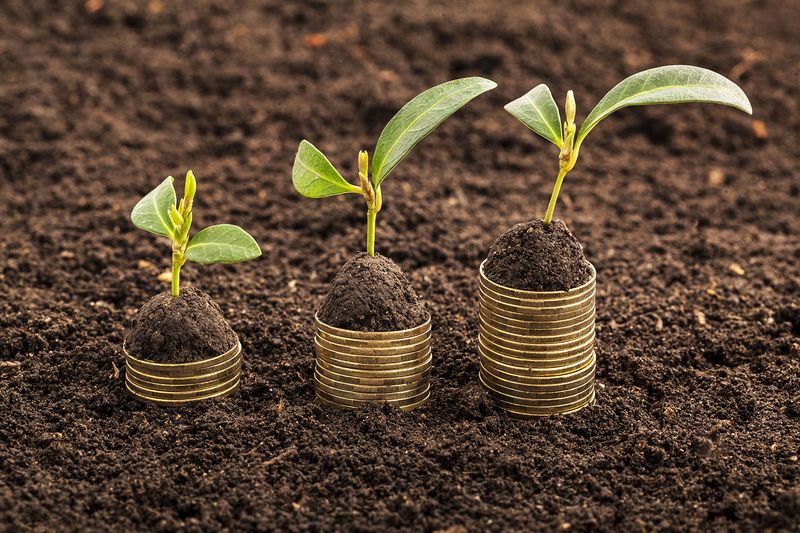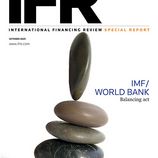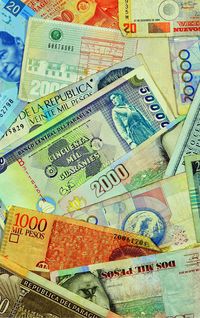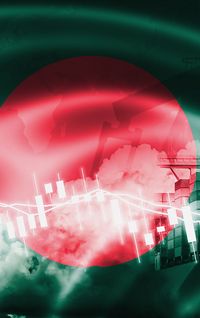Covid-19 provides a significant test to the ability of multilateral development banks to respond collectively and rapidly to mitigate the pandemic’s worst effects on the health and social wealth of developing nations
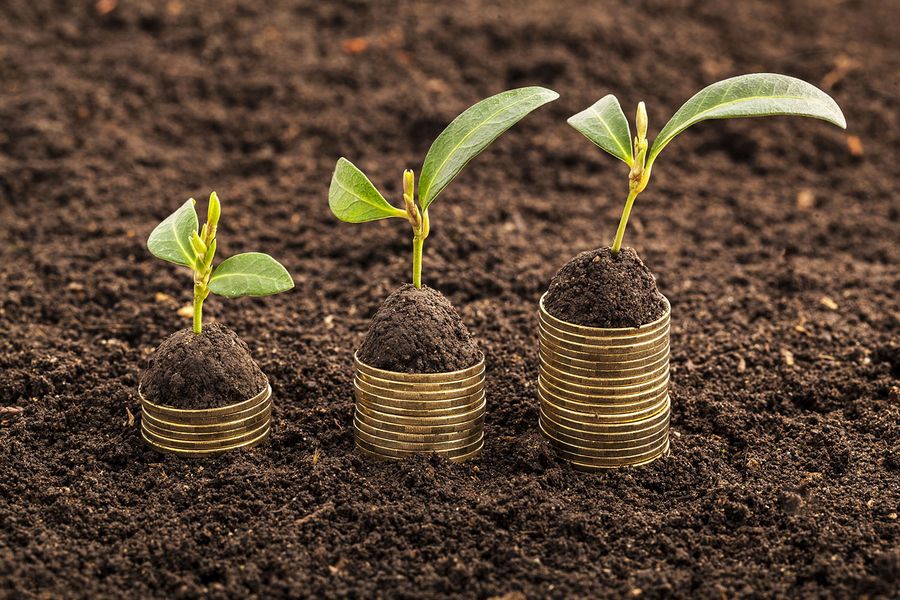
At the end of 2019, when word that a contagious virus had taken hold in Wuhan, few could have forecast the extent to which Covid-19 would dominate headlines and affect lives in 2020. Since the first reported Covid-linked death in January, the speed at which the virus spread has been unprecedented. According to the World Health Organisation, by September 19 the virus had appeared in 216 countries, areas or territories, infected over 30 million people and pushed the death count towards the one million mark.
While the effect of the pandemic has been felt across the globe, its negative implications are most acutely borne in countries least able to respond, compounding problems already experienced by the millions around the world struggling for their basic needs such as food and health, those without jobs in economies adversely affected by a collapse in trade, tourism and commodity prices, and those on the front line working in health systems ill-equipped to cope with the increased demands placed upon them by Covid-19. These are the people multilateral development banks are primarily trying to help.
And it is not just physical and economic security that is in jeopardy.
“This crisis is different in how it affects each individual,” said Heike Reichelt, head of investor relations and sustainable finance at the World Bank Treasury.
“Even in cases where people are fortunate to have food, jobs, physical health and access to healthcare and internet, there’s the mental health problem that is often not discussed. People feel isolated, they’re having to cope with the dual demands of working virtually from home during a crisis with an intense workload, many with kids home from school, there's the fear of becoming sick, there’s uncertainty, there’s stress.”
The uncertainty felt by individuals was also reflected in the business world and in financial markets. As trade ground to a halt and supermarket shelves emptied, investors prepared themselves for a long-term economic downturn as opposed to earlier hopes of a quick V-shaped recovery. Stock markets tumbled. The Dow Jones Industrial Average fell by over 37% from a level of 29,551.42 on February 12 to a low of 18,591.93 on March 23. Unusually, bond markets sold off in unison as investors rushed to restore cash balances.
Central banks and governments acted swiftly to preserve the flow of credit into the private sector, restore confidence in the financial system and prop up distressed industries and firms in the face of widescale business disruption. The multilateral development banks were likewise called into action.
“The Asian Development Bank had already been approached for resources by some of its member countries by late January,” said Tomoyuki Kimura, director general of the bank’s Strategy Policy and Partnerships Department.
It committed US$2m in new funding to support efforts in combatting the spread of Covid and, in February, made its first private sector loan to Jointown Pharmaceutical Group in China, in order to support the firm’s efforts in maintaining supplies of essential medicines and personal protective equipment.
It was a sign of things to come.
“MDBs have a critical role to play in all crises,” said Alexia Latortue, managing director for corporate strategy at the European Bank for Reconstruction and Development. “They have the ability to quickly step up financing and have a business model that provides the capacity to take risk onto the balance sheet. They help to provide order where there is chaos.”
Providing order on a global scale and at speed is not something that can be realised by one institution. MDBs had to coordinate activities to address the short-term needs of those in developing countries most affected by the pandemic.
“[MDBs] have a global responsibility,” said Reichelt. “We have the relationships and the infrastructure needed to react to and ramp up for a crisis.”
Making the most of that network required repeated communication, coordination and direction. Intense meeting schedules were established, not just at the president level but on all levels - from deputy heads through to lawyers, risk managers, country managers and capital markets teams. A task made no easier by the restrictions placed upon travel and face-to-face meetings.
EARLY WARNINGS
On December 31 2019, WHO’s China country office was informed of a cluster of pneumonia-type cases in Wuhan City, and by January 13 the first case of infection outside of China was reported in Thailand. On January 23, Wuhan, a city of 11 million people, had been locked down. It was a move that would be followed rapidly around the world.
“Concern was triggered as to the severity of the problem very early on,” said Anastasia Gekis, manager, operations management unit at IFC, the private sector arm of the World Bank Group. “As the virus spread, we needed to maintain focus, keep innovating and monitor impact.”
The speed at which the pandemic developed had to be matched by the reaction of governments and supranational institutions. On March 3, G7 finance ministers and central bank governors released a joint statement vowing to use all appropriate policy tools to achieve sustainable economic growth and safeguard against downside risks. They also welcomed the commitment of the International Monetary Fund, the World Bank and other international financial institutions to “stand ready to help member countries address the human tragedy and economic challenge posed by Covid-19 through the use of their available instruments to the fullest extent possible”.
Commitment from the World Bank Group came in the form of an initial fast-track package of US$12bn, of which US$8bn was new, that would go towards providing grants and low-interest loans from IDA for low-income countries and loans from IBRD for middle-income countries.
The announcement was part of a coordinated effort.
“The MDBs very quickly got together to discuss the response and agree on priorities in addressing the needs of the different parts of the economy according to their cooperative advantage,” said Latortue. “The World Bank focused on health, and the IFC and EBRD, the private sector, for example.”
WORLD BANK
On March 17, the board of directors at the World Bank and IFC approved an increase in their response package to US$14bn. It formed part of the bank’s pledge to provide US$160bn over a 15-month period to help support countries in their response to the health consequences of the pandemic and to bolster economic recovery.
The initial response focused on emergency relief, targeting health projects and reprioritising existing projects in order to make the most of systems that were already in place.
“It’s important to build on established groundwork, especially in times like these,” said Reichelt. “Colleagues moved quickly to address the immediate needs of our clients with things like communications campaigns, health preparedness, providing medical supplies and training, the provision of personal protective equipment and supporting laboratory testing facilities and research, as well as focus on food supply.”
It is part of an evolving reaction to the pandemic.
“The first phase is to save lives, hence the focus on health,” said Reichelt. “But then there is a need to especially protect the poorest in society, so there’s a social aspect to the response. In the medium term, we have to plan for business growth and strengthening institutions. It’s a case of relief, restructuring and ensuring a resilient recovery, but with equity, with inclusion and with a focus on resilience and sustainability.”
From the first US$1.9bn set of projects using its dedicated Covid-19 Fast Track Facility, the World Bank Group had announced emergency operations in over 100 developing countries by May, and that number had expanded to over 150 projects by September.
IFC
“In any crisis, the first key task is to assess the impact on the underlying portfolio,” said Gekis, “and in this scenario to track that assessment versus the impact of Covid-19. The next step is to work with other companies where we can offer support. We need to be flexible, innovative and to learn from the lessons of the past.”
IFC, with an initial provision of US$8bn, made a start in its efforts by addressing the impact of the pandemic on existing clients through the use of its Global Trade Finance Programme (GTFP), established during the financial crises of 2007/2008.
“It has been a case of proactive engagement,” explained Gekis. “We wanted to ensure that trade continued to flow by providing financial institutions with sufficient liquidity and working capital to mitigate payment risk of small and medium-sized enterprises in the supply chain.”
Some US$2bn of the US$8bn fast-track package went towards the GTFP. A further US$2bn in liquidity was targeted at local banks in the emerging markets to keep financing companies afloat and another US$2bn to help banks shore up businesses’ working capital. The remainder was destined for the real economy, providing short and medium-term loans to existing clients in vulnerable sectors, such as tourism, or to help other sectors, such as healthcare, to ramp up production in the face of increasing demand.
“We used up US$2bn of the GTFP pretty quickly (by mid-June), with solid use in Sub-Saharan Africa and South Asia,” said Gekis. “Of the remaining US$6bn, we have already committed roughly US$1.9bn and are working on ensuring a good spread across the world. There are also an additional US$1.8bn of Covid-19 response projects not funded by the facilities.”
In July, the IFC announced the establishment of a US$4bn healthcare platform, designed to increase access for developing countries to healthcare supplies, such as masks, test kits, ventilators and potential vaccines. Some US$2bn will come from the IFC’s own account with the remainder mobilised from the private sector.
“Most will be offered to help scale up production in developing countries,” said Gekis. “But companies in developed countries are also eligible for funds as long as they commit a share of their supply to developing countries.”
EBRD
Europe’s private sector financing institution’s operational response came in the first days of March with EBRD’s first €1bn Solidarity Package, approved on March 13.
“The package included a resilience framework, providing short-term liquidity to the bank’s existing clients that may have been experiencing temporary credit difficulties,” said Richard Jones, director of business development at EBRD. “It also included the expansion of trade finance, covering deferrals of payments and providing short-term financing. The key was to provide a rapid response. Decisions that would take a few months in the past were being made in a few days.”
The second phase of the bank’s response came on April 23, when it announced its intention to devote its entire activity in 2020-2021 to responding to the economic impact of the pandemic, providing €21bn in support. Due to the strength of demand, the resilience framework was increased to €4bn and the scope widened to include affiliates of existing clients.
“We noted the extent to which the pandemic would make an impact over time and so we had to react accordingly,” said Jones.
This included strengthening SME financing with existing and new clients in order to stabilise the real economy, and the provision of an emergency facility for infrastructure.
“The Vital Infrastructure Support Programme ensures the continued provision of vital services where revenues have fallen dramatically through, for instance, tariff reductions,” said Jones.
By the end of August, the EBRD had made record investments, with some €7bn of financing concluded since the start of the year, half of which was through the streamlined package. In 2019, it had invested €4.5bn over the same period.
As time passes, it will aim to keep the channels of commerce open through its Trade Facilitation Programme, offer fast-track restructuring to distressed clients, employ the use of equity financing where appropriate and put a greater focus on policy support.
ADB
The ADB moved quickly in its response to the developing crisis in the region, announcing its first support in January, and an initial support package to developing member countries of US$6.5bn on March 18. By April, its Covid-19 response package had been increased threefold to US$20bn.
“ADB focused on our strength,” said Kimura. “We needed to act quickly in order to protect the poor and vulnerable in the region, so we designed our Covid-19 Pandemic Response Option (CPRO) as a core part of the overall support package. The CPRO is the instrument to finance countercyclical development expenditures with particular focus on providing a safety net for the jobless, the poor, women and children.”
As of August 3, the ADB had committed US$9.3bn in financial resources and mobilised commitments of US$4.6bn from development partners.
Most of the US$9.3bn in ADB financing went towards supporting governments’ efforts to address the impact of the pandemic, and most of that total has been provided through the CPRO (US$6.9bn).
In addition, ADB committed $1.3bn for trade finance, supply chain finance,and microfinance programmes.
After immediate assistance focused on countercyclical fiscal support, ADB will transition into support using more conventional instruments of project and policy-based lending.
“The ADB is preparing a three-year business plan with a scenario approach to determine its support for the transition to the new normal,” said Kimura. “It’s not easy but we are preparing support programmes with more emphasis on health and education. For infrastructure, we will adapt operations to meet evolving needs of client countries under a new normal. There is also growing demand for policy-based lending reflecting growing momentum to push through reform agendas.”
PANDEMIC BORROWING
Financing efforts to address the pandemic led borrowers to the bond market and there were some noteworthy Covid-themed deals printed. MDBs were at the forefront of the action, having long played a leading role in the advancement of markets designed to mobilise a growing socially responsible investor base into financing green and social projects. And with the pandemic essentially a social issue, social and sustainability bond markets were seen as a natural conduit for mobilising a willing private finance sector into fighting the war on Covid.
“Embedding ESG assessments has been a growing theme with investors,” said Isabelle Laurent, EBRD deputy treasurer. “It has become part of their fiduciary duty.”
Volumes of social and sustainability bonds increased accordingly, with Moody’s noting record issuance of social (US$33bn) and sustainability bonds (US$19bn) in the second quarter of 2020.
Nevertheless, launching deals into a volatile market was not going to be plain sailing. Just as funding programmes increased, secondary markets were broken, making the issuance of any bond in March a feat in itself. Yet, as a degree of confidence returned to financial markets, the MDBs were in a strong position to tap into an investor base showing appetite for highly rated, benchmark-sized deals – albeit at wider credit spreads.
The World Bank’s US$3.5bn five-year Sustainable Development Bond priced at a mid-swaps plus 10bp in March, for example, whereas in April, the borrower priced the biggest ever single deal from a supranational issuer, a US$8bn five-year SDB at mid-swaps plus 24bp.
“The April deal was wider, due to the general widening of all bonds. In contrast, on a yield basis, the April bond was issued substantially lower than the March bond,” said Reichelt.
Despite the boom in pandemic-related bonds issued in line with Social Bond Princples of Sustainability Bond Guidelines, not every borrower chose to launch via that route.
The Nordic Investment Bank, for instance, chose to launch Response Bonds rather than establish a social bond framework, as there were concerns that short-term projects and financing its position as a stabilising influence during times of economic crisis would not be compatible with the Principles. The EBRD, meanwhile, explained that its bonds’ use of proceeds were documented to make clear that its Covid response was included under “general capital purposes”.
“Our themed bonds focus on projects with long-term social or environmental objectives,” said Laurent. “Reacting to Covid has been much more about fast disbursing short-term social and economic support.”
As both developed and developing countries continue to grapple with the impact of the pandemic, a focus on addressing the short-term social and economic needs of the most vulnerable will remain of paramount concern, but the opportunity to rebuild economies and society in a more sustainable and equitable way is in everyone’s interest and in the phased strategies of the MDBs.
“Covid-related projects have overtaken our green investments this year, but we will continue to build a green economy during the recovery phase,” said Jones.
MDBs will play a part in supporting the recovery and the development of markets that help mobilise private finance into jointly paying for it. Issuance volumes of green and social bonds are set to soar as a result.
Nick Herbert
To see the digital version of this report, please click here
To purchase printed copies or a PDF of this report, please email gloria.balbastro@refinitiv.com
